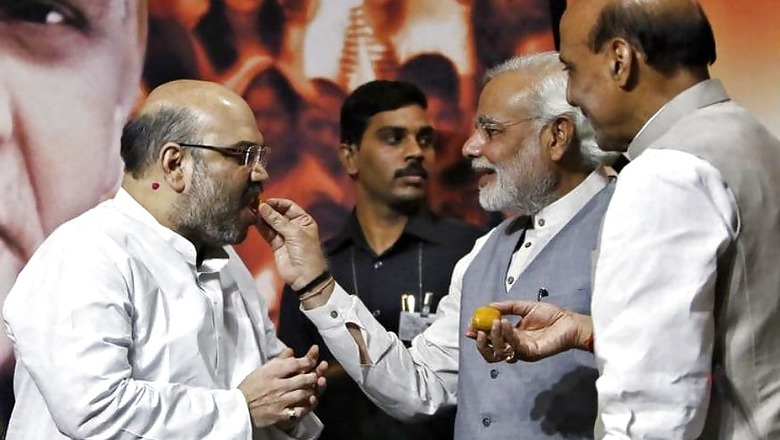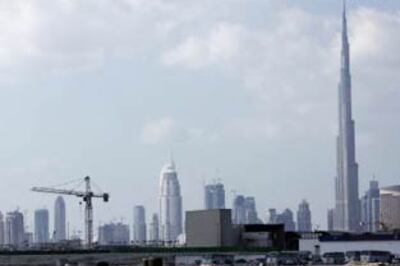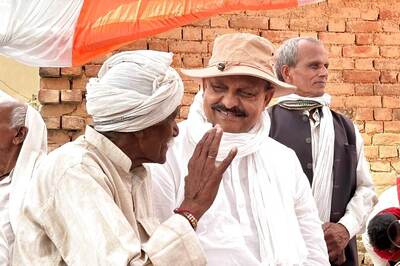
views
Lucknow: There are perils lurking in every corner when you enter a crucial poll without a face, even if the party is Narendra Modi’s BJP. For one, there are different claimants for the top post, then the caste satraps snapping at your heels. But for Chief Architect Amit Shah, the foundation for the campaign is all that mattered.
"Chunav spashtata se lada jata hai, chunav ka lakshya jeet hota hai,” (Elections are fought with clarity of mind with the single objective of victory)," he would often say to his colleagues in closed-door meetings.
Uttar Pradesh had to be won at any cost, after all, the state had made the most significant contribution of 73 MPs to the BJP's victory. And it was that victory that made the former minister of state for home in Gujarat the national president of India’s ruling party.
And Shah knew well that the vote share of 42 percent they netted in 2014 could not be directly translated into an assembly victory in 2017. Something more was needed.
A series of events in the last two years highlight how early the BJP actually started preparing for Battleground UP. The new social combination of consolidating roughly 40 percent non-Yadav OBCs began with appointing Phulpur MP Keshav Prasad Maurya as the party's state president on April, 8, 2016.
A relative light-weight, 47-year-old Maurya comes from a humble background and entered politics through RSS and VHP/Bajrang Dal. Despite criticism that Maurya had criminal cases against him, shah was confident of his choice.
This ensured that the RSS would give full organisational support and the Kushwahas, a significantly population in Eastern UP, would back the BJP. A Khsuwaha vote for BJP is also one less for SP.
The party also kept the suspense over who could be its CM candidate. Speculation was high that an OBC state president would mean an upper caste CM candidate as the outgoing state chief and Meerut MLA Laxmikant Bajpai was a Brahmin.
Party insiders say that the decision to not project a CM actually worked for them because that didn’t lead to divisions. What was seen as its biggest disadvantage initially proved to be the BJP’s biggest advantage with the elections converting into a mid-term referendum on Brand Modi.
And UP nodded in agreement. Brand Modi swept India’s largest state, BJP’s biggest victory yet after 2014.
BJP's own assessment is that it is a kind of ‘pro-incumbency’, a vote for the Central government. It is also a victory for the welfare schemes of the Modi government. UP has Over 52 lakh Ujjawala beneficiaries, 4 lakh registered beneficiaries of Atal Pension Yojana, 3 crore Jan Dhan accounts, there has been a disbursement of Rs 20,000 crore in Mudra.
And then Modi’s masterstroke, the demonetisation drive, ended up creating a new class constituency as well.
A look at a number of defections that happened before the elections revealed the caste arithmetic that was being carefully worked out. Besides the appointment of Keshav Prasad Maurya, in 2015 the BJP created an OBC cell for the first time in its history.
It appointed SP Bhagel as the OBC morcha president. Keeping in mind this crucial constituency, the party also roped in Mayawati's close confidante Swamy Prasad Maurya. In the ticket distribution, the non-Yadav OBCs were wooed through 140 seats.
Besides this constituency, the party tried to aggressively win over the non-Jatav Dalits who impact close to 83 seats. They were given 70 tickets despite them being less in percentage in comparison to Jatavs who are 12 percent in UP, while the non-Jatavs are 10 percent.
Such was the level of micro-planning that in order to win over four percent Pasi community which is the second-largest Dalit constituency - the BJP president even agreed to stretch himself to accommodate the demands of the leader from this community.
The BJP also gave outside support to RK Chaudhury who had refused to contest on a BJP ticket. The Pasis have a significant number in central UP and the BJP has 3 Pasi MPs as well.
Sources in team Amit shah highlight his efforts at striking an effective alliance at multiple levels saying how Apna Dal MP Anupriya Patel's induction into the council of ministers in the second round of cabinet reshuffle was a move keeping in mind the caste calculations. Adding to that, alliance with Bhartiya Samaj Party chief Om Prakash Rajbhar in Purvanchal was again a move keeping in mind his influence over 40-50 Seats.
In 2016, the BJP president had held a Yuva Town Hall and had connected to nearly 74,000 youth of UP via videoconferencing in 156 locations. Sources say that UP ki man ki baat programme was carried out to get response for the party's manifesto. The Lok Sankalp Patra was a document drafted after consulting 40 lakh people through whatsapp, twitter and other methods.
It was through this process of collection called Jan Akanksha that the party decided to emphasise on its farm loan waiver and other points around women safety that featured in the manifesto.
Giving more details of how effective their campaign was, party strategists say there were a series of Yuva Sammelans and Mahila Sammelans to connect to the youth and women. In order to reach out to the traders upset by the demonetisation the party leadership held 14 contact programmes with them.
The party's parivartan yatra which began from four different corners of the state and converged in Lucknow covered over 8000 km and managed to contact nearly 50 lakh people in the state.
Over the last two years ever since he took charge as the party president Shah had been aggressively pushing for membership drive in the state of Uttar Pradesh. Party sources say that in the last one year alone the party managed 1 crore 80 lakh primary members. 75,000 party workers were given training at the mandal and district level.
In order to ensure booth management all 1 lakh 47,401 booths had committees consisting of 10-21 members everywhere.
The party sources say that the prime minister's decision to campaign aggressively in his constituency Varanasi before the last phase was solely his decision. The party was worried that even one seat loss in his constituency would be highlighted more by the opposition. The prime minister did manage to stamp this as his victory alone.


















Comments
0 comment